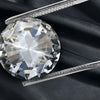
How Many Sides Does a Diamond Have? Understanding Diamond Anatomy
When we talk about the sides of a diamond, we're often referring to the shape and facets that define its appearance and brilliance. As a classic gemstone that has fascinated humanity for centuries, the diamond's structure is both elegant and complex.
Each diamond is intricately cut to enhance its reflective properties and to maximize its inherent beauty.
A common round brilliant diamond, which is well-known for its exceptional sparkle, usually has 57 or 58 facets. Facets are the flat, polished surfaces that allow light to enter and reflect within the stone.
The art of cutting a diamond is precise, aimed at producing a gem that catches the light just right. Different diamond shapes may have the same or different numbers of facets, depending on the specific cutting style applied to the raw diamond to best display its unique properties.
The Basics of Diamond Shapes and Cuts
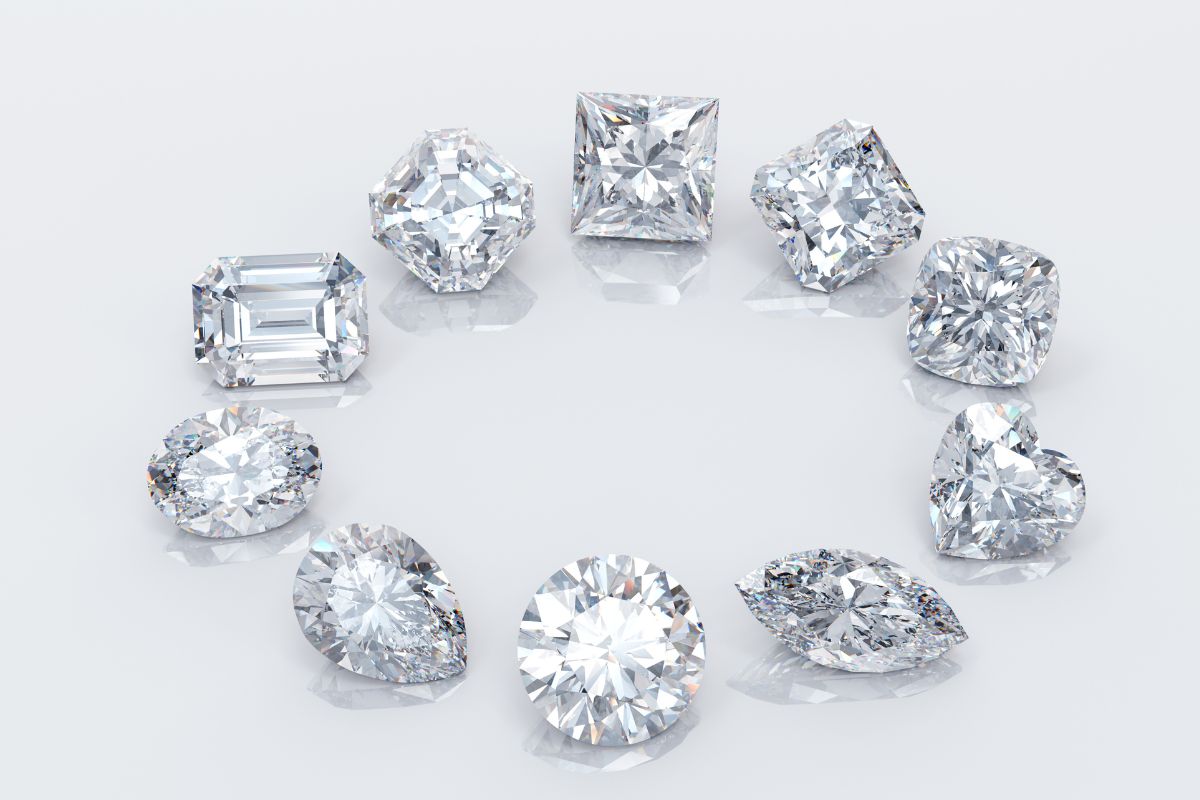
In the realm of diamonds, the concepts of shape and cut are fundamental yet distinct. I'll guide you through the facets of each, discerning the nuanced differences and exploring the variety that exists within diamond geometry.
Distinguishing Between Diamond Shape and Cut
Shape refers to the geometric form visible from the top view of the diamond. On the other hand, a cut is about the diamond's faceting patterns, which influence its brilliance and fire.
These two terms are often used interchangeably, but they have specific meanings in the context of diamonds. Understanding this distinction is crucial in appreciating a diamond's aesthetics and value.
Common Diamond Shapes
Diamonds come in a variety of shapes, each with its unique appeal. Below are some of the most prevalent shapes:
- Round: Nearly 75% of diamonds sold are Round Brilliant Cuts, known for their superior sparkle.
- Princess: Recognized for their square or slightly rectangular silhouette, Princess Cuts have pointed corners and are highly popular.
- Oval, Pear, and Marquise: These are elongated shapes that can create an impression of greater size.
- Emerald and Asscher: They are step-cut diamonds, offering a different type of reflection known for its 'hall of mirrors' effect.
- Heart and Cushion: These shapes carry romantic connotations and are favored for their unique and soft appearance.
Understanding these shapes is instrumental in selecting a diamond that aligns with personal style preferences.
Understanding Diamond Cuts
A diamond's cut is a measure of the symmetry, proportion, and polish of the stone. These factors directly influence a diamond's brilliance:
- Depth: The height of a gemstone as measured from the culet to the table. Incorrect depth can lead to light leakage and reduced sparkle.
- Symmetry: Refers to the alignment of a diamond's facets, which should be consistent and precise.
- Polish: Indicates the smoothness of each facet's surface.
Experts grade cuts from 'Excellent' to 'Poor,' and an ideal cut enhances the diamond's natural sparkle to its full potential.
The Anatomy of a Diamond

When I discuss the anatomy of a diamond, I'm talking about the structural features that make up the stone. This includes its facets, which are the flat surfaces, as well as key components such as the table, crown, pavilion, girdle, and culet.
Key Components of Diamond Anatomy
- Table: This is the largest facet of a diamond, located at the topmost part, serving as the window into the stone's interior.
- Crown: The section above the girdle, extending from the table to the meeting point of the upper faceting or girdle.
- Girdle: The intersection of the crown and pavilion which defines the perimeter of the diamond. Its appearance can be polished smooth or faceted, and it plays a critical role in the overall structure.
- Pavilion: Below the girdle, forming the bottom part of the diamond, narrowing down to the point.
- Culet: The small facet at the base of the pavilion, which can be absent in some stones; it is meant to prevent chipping.
Facet Arrangement and Diamond Anatomy
- Brilliant Cut: Characterized by numerous facets (usually 57 or 58), which are designed to maximize light reflection.
- Step Cut: Features longer, more rectilinear facets that usually run parallel to the girdle, such as in emerald and baguette cuts.
- Mixed Cuts: Combine elements of both brilliant and step cuts, often seen in modern fancy-shaped diamonds.
My description emphasizes the placement of these facets around the diamond to contribute to its overall symmetry and light reflection qualities.
Importance of Proportions in Diamond Anatomy
Proportions play a vital role in the diamond's light performance. Incorrect proportions can lead to light leakage where brilliance is lost.
- Depth Percentage: The height of a diamond from the culet to the table, measured relative to the overall width of the stone. Ideal depth percentages can differ based on the shape of the diamond.
- Table Percentage: The width of the table facet relative to the width of the entire stone. It's crucial for the proper refraction of light inside the diamond.
I recognize that the exact proportions can vary by diamond shape but maintaining a balance is key for maximum sparkle and beauty.
Diamond Facets and Sides
As an expert in diamond characteristics, I'll guide you through the complexities of diamond facets and sides, which dramatically impact the gem's brilliance and appearance.
Defining Facets and Their Role
Facets are flat surfaces on a diamond, and each is meticulously cut and polished to maximize the stone's ability to reflect light. The art of cutting facets is crucial for enhancing a diamond's fire—the dispersion of light into the colors of the spectrum—and brilliance, or its overall light-reflecting capabilities.

How Many Facets Make Up a Diamond?
The classic round brilliant cut, recognized for its exceptional shine, typically features 58 facets: one table, 8 bezels, 8 stars, and 16 upper girdle facets on the crown, with 8 pavilions, and 16 lower girdle facets on the pavilion, plus the culet. Fancy cuts differ in facet count:
- Princess cut: 58 to 144 facets
- Emerald cut: Around 49 facets
- Ashoka cut: Up to 62 facets Different cuts yield varying facet numbers, tailoring a diamond's appearance to personal tastes.
Influence of Facet Count on Appearance
My observation is that the number of facets directly influences a diamond's overall appearance, including its cut quality. More facets generally lead to more intricate light paths within the stone, resulting in increased sparkle and a more vibrant appearance. However, with cuts like the emerald cut, fewer facets create an elegant hall-of-mirrors effect, showcasing a diamond's clarity.
The Round Brilliant Cut
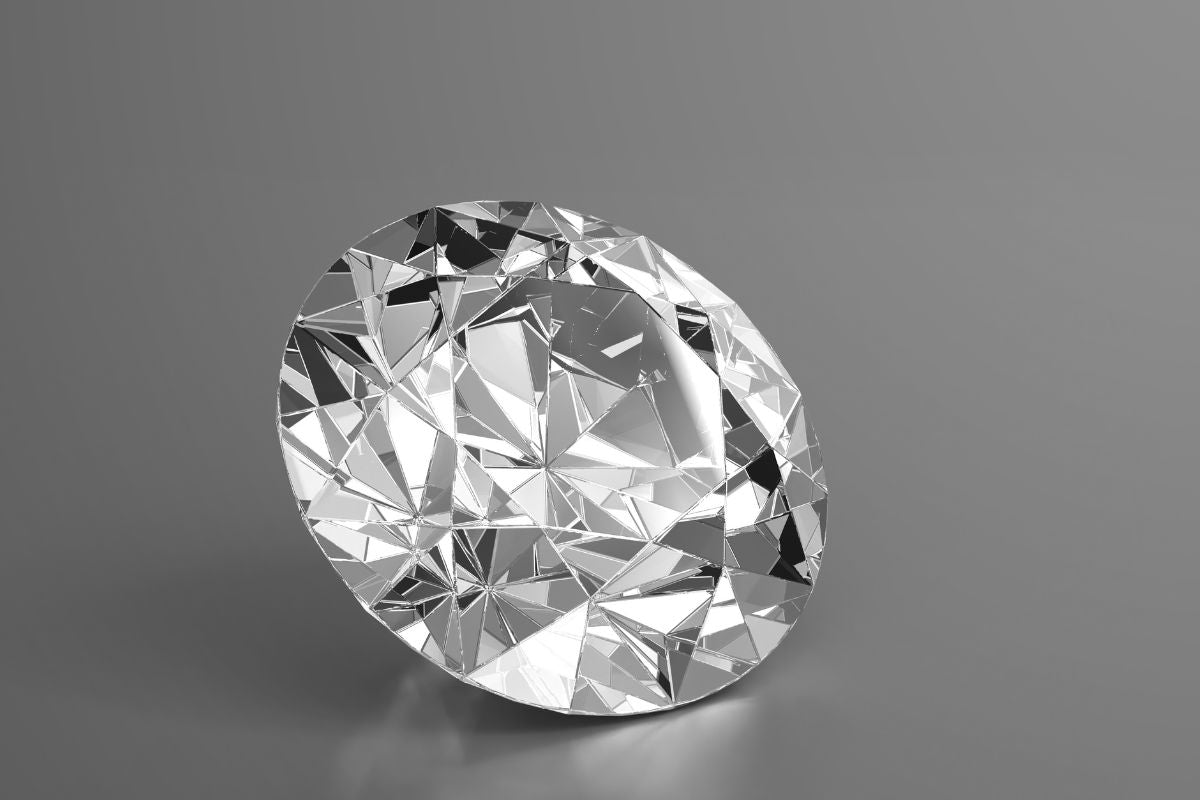
When discussing diamond cuts, the round brilliant ranks as the most sought-after due to its ability to maximize a diamond's brilliance.
Characteristics of the Round Brilliant Cut
The round brilliant cut is celebrated for its unparalleled aesthetics. This design consists typically of 57 or 58 facets, which include the table, crown, girdle, pavilion, and occasionally a culet at the bottom. These facets are strategically arranged to enhance the diamond’s beauty. The table facet, usually the largest, plays a crucial role in capturing light.
- Facet Count: Usually 57 or 58
- Facets Include: Table, Crown, Girdle, Pavilion, Culet (optional)
The proportions of a round brilliant cut are critical in defining its appeal. If cut to precise geometric standards, the round brilliant cut yields the highest levels of sparkle and aesthetics.
Optical Performance of Round Brilliant Cut Diamonds
The optical performance of round brilliant cut diamonds is unrivaled. It is specifically crafted to achieve maximum brightness, sparkle, and fire. I've learned that the cut grade has a profound impact on these optical characteristics.
- Brightness: Light reflected from the interior of the diamond
- Fire: The dispersion of light into the colors of the spectrum
- Sparkle (Scintillation): The flashes of light observed when the diamond moves
The symmetrical arrangement of facets directs light entering from the top through the stone and back to the viewer's eye. This culminates in the bright and fiery display recognized as brilliance. The round brilliant is thus the benchmark cut against which all other diamond cuts are measured for optical performance.
Fancy Cut Diamonds
In the realm of diamonds, fancy cut gems offer a distinct visual appeal compared to the traditional round brilliant. These diamonds come in a multitude of shapes, each with its own unique characteristics and charm.
Variety and Beauty of Fancy Cuts
I must highlight that each fancy cut diamond boasts a different number of sides and facet arrangements, contributing to their individual beauty.
Unlike the round brilliant cut, which is aimed at maximizing sparkle, fancy cuts such as the emerald, cushion, and oval, prioritize unique appearance and often feature larger, open facets.
These cuts can enhance the stone's color and clarity, making inclusions less noticeable and color more pronounced.
- Emerald cut: Characterized by its rectangular facets and elongated shape, providing a hall-of-mirrors effect.
- Cushion cut: Known for its rounded corners and larger facets, enhancing its luster.
- Pear cut: Combines the best of the round and marquise shapes, with its tapered point and rounded end.
- Oval cut: Sought-after for its elongation effect on the hand, giving an impression of slender fingers.
Popular Fancy Diamond Cuts
When it comes to engagement rings, particular fancy cuts have gained popularity for their distinctiveness and flair. I have observed that the princess, marquise, cushion, and pear cuts are often selected for their romantic appeal and brilliance.
- Princess cut: Immediately recognizable by its square shape and pointed corners, this cut is second in popularity only to the round brilliant.
- Marquise cut: With its football-shaped silhouette and pointed ends, it's a cut that offers an illusion of greater size.
- Pear cut: Resembles a teardrop and is another favorite for engagement rings due to its unique shape combining round and marquise cuts.
Evaluating Diamond Cut Quality
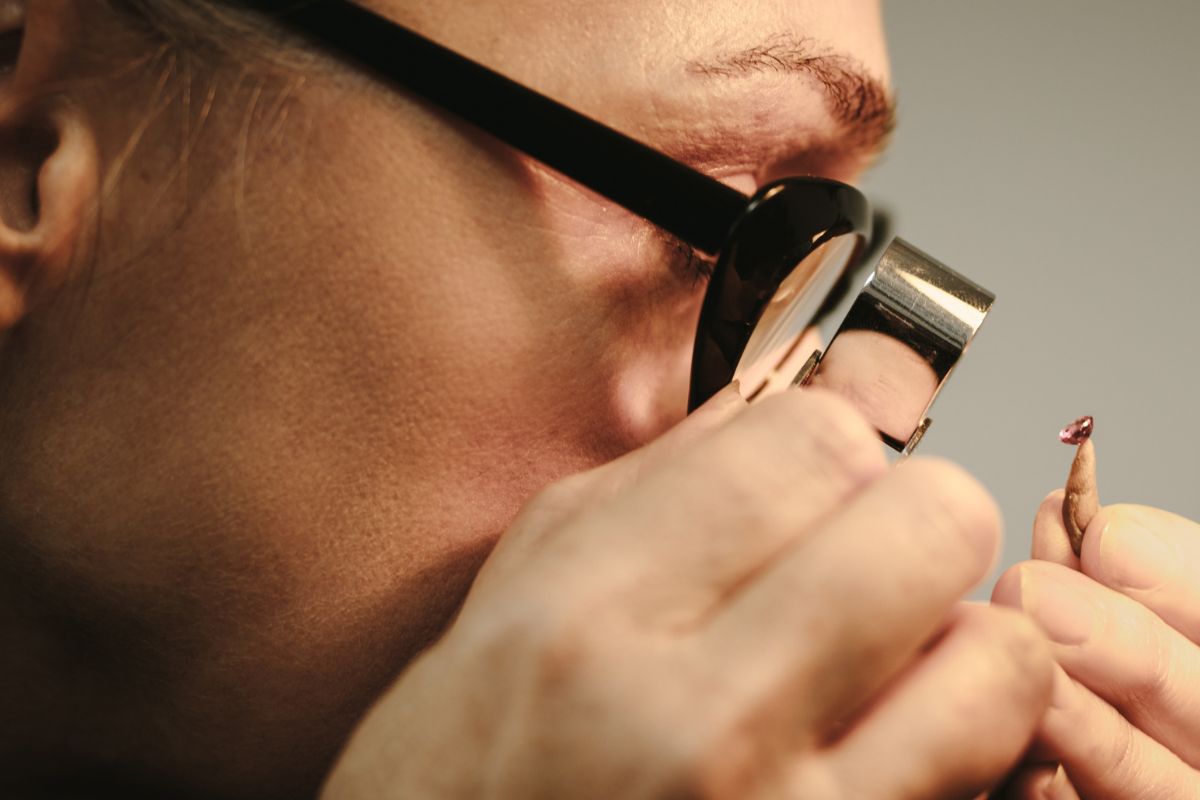
When I assess diamond cut quality, I focus on the precision of the cut, its proportions, and its ability to reflect light. These elements are critical for maximizing a diamond's brilliance and value.
Criteria for Assessing Diamond Cut
The evaluation of a diamond's cut quality involves analyzing multiple aspects:
- Table Size: The table size of a diamond should ideally be between 52-62% of the diamond's width. This range tends to optimize the balance between brilliance (white light reflection) and fire (color dispersion).
- Depth Percentage: A well-cut diamond will have a depth percentage that allows for the optimal return of light.
- Symmetry: This refers to the alignment and intersection of the facets. Symmetrical diamonds have well-balanced proportions that contribute to their overall sparkle.
- Polish: The quality of a diamond's polish affects how smooth the facet surfaces are, which can impact how light interacts with them.
The GIA Diamond Cut Grading System
The Gemological Institute of America (GIA) has established a grading system for diamond cuts that ranks them primarily based on how they handle light:
- Excellent: Reflects nearly all light that enters the diamond, producing superior brilliance and fire.
- Very Good: Reflects most of the light that enters, resulting in exceptional sparkle with minor trade-offs in brightness or fire.
- Good: Reflects a considerable amount of light but not as much as higher grades.
- Fair: Reflects a moderate amount of light, but less than desired.
- Poor: Reflects minimal light, commonly due to excessive depth or an overly large table which can diminish a diamond's liveliness.
Impact of Cut Quality on Diamond Value
The cut grade has a profound effect on a diamond’s value; often more so than any other single characteristic. A diamond with excellent or very good cut grades will command a higher price, as they exhibit impressive brilliance and fire.
Conversely, diamonds with lower cut grades may be less expensive, as their lesser quality can result in a duller appearance.
The cut quality also directly influences the perceived size and overall beauty of the diamond, making it a paramount detail for potential buyers to consider.
Diamond Proportions and Symmetry
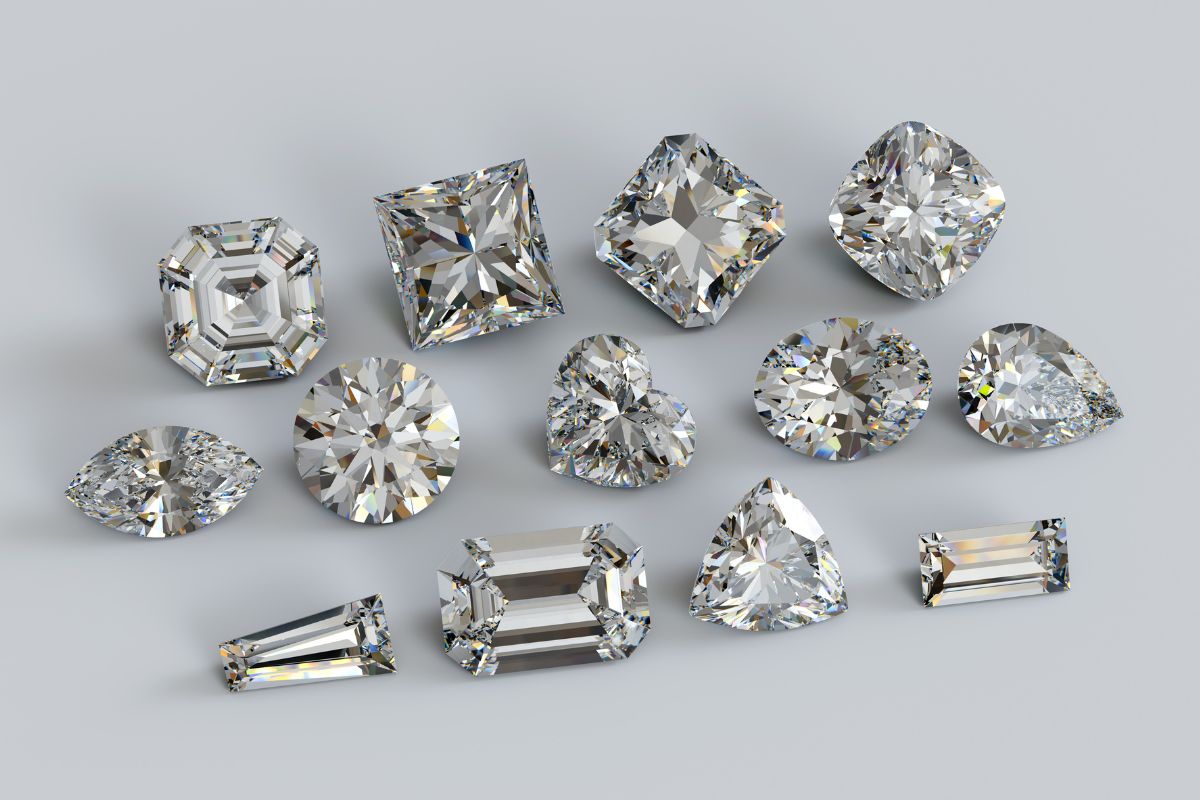
In discussing diamonds, I find it paramount to emphasize the precise proportions and symmetry. These factors play a crucial role in a diamond's ability to reflect light, thus determining its brilliance.
Exploration of Diamond Proportions
Diamond proportions refer to the relationships between the different parts of a diamond. Specifically, these proportions are the sizes and angles of the facets and how they relate to one another, as well as to the overall size of the diamond.
The table percentage, which ideally ranges between 52 and 62 percent, is noteworthy; it's the ratio of the width of the diamond's top facet (the table) to the width of the diamond overall.
Other critical proportions include the crown angle, pavilion angle, and the depth percentage, which is the diamond's height in relation to its average girth.
Each of these dimensions needs to be in a precise proportion to maximize the diamond's light performance.
- Table Percentage: 52-62%
- Depth Percentage: Critically assessed for optimal light reflection
- Crown Angle: Influences the diamond's dispersion of light
- Pavilion Angle: Critical for light return
Getting these angles and percentages right is essential for what I recognize as a diamond's 'fire'— the scattering of white light into all the colors of the rainbow.
Symmetry and Its Effect on Light Performance
Symmetry in diamonds refers to the exactness of the shape and arrangement of facets, which includes how uniformly the facets are aligned and intersect.
Symmetrical diamonds have facets that are equal in size and opposite facets that are perfectly aligned.
The Gemological Institute of America (GIA) grades symmetry based on how these facets meet and align at 10x magnification.
When a diamond's facets are symmetrical, it will exhibit better light performance. In essence, light can travel and reflect through the stone more effectively.
Deviations in symmetry can cause light to refract incorrectly, leading to a loss in the stone's potential brilliance.
GIA's grading scale for symmetry includes the categories: Excellent, Very Good, Good, Fair, and Poor. Diamonds that achieve a grade of 'Excellent' in symmetry are perceived to have maximum light performance, often commanding higher prices.
- Symmetry Grades (GIA): Excellent > Very Good > Good > Fair > Poor
- Effect on Light Performance: Direct correlation—higher symmetry typically equals better brilliance
Diamond Clarity and Inclusions
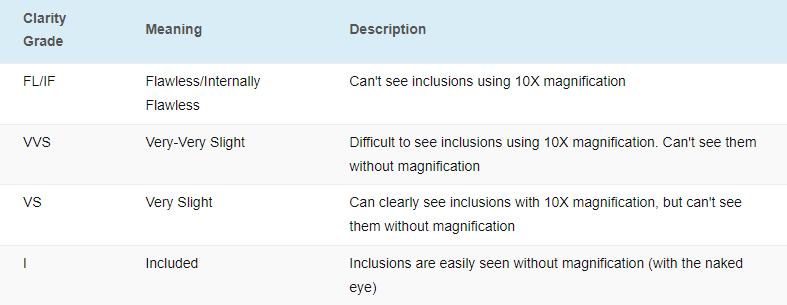
When assessing diamond quality, we often emphasize its clarity and inclusions. These two factors impact not only the diamond's appearance but also its value.
Understanding Inclusions and Diamond Clarity
Inclusions are internal characteristics that occur in diamonds during their formation. I categorize their visibility under 10x magnification according to a clarity scale.
This scale ranges from Flawless, with no internal inclusions or external blemishes visible under magnification, to Included, where inclusions are obvious and can affect the stone's transparency and brilliance.
- Types of Inclusions:
- Pinpoints: Tiny crystals inherent to the stone.
- Feathers: Small fractures within the diamond.
- Clouds: Hazy areas caused by many tightly grouped pinpoints.
When I examine a diamond's clarity, I look for these inclusions and assess them based on:
- Number: How many inclusions there are.
- Size: The size of each inclusion.
- Position: Where the inclusions are located within the diamond.
- Nature: The type of inclusion.
- Relief: The distinctness of the inclusion compared to the diamond.
Clarity's Influence on a Diamond's Aesthetics
The level of diamond clarity has a direct correlation to its sparkle. Inclusions can interfere with the path of light as it travels through the diamond, affecting the intensity and distribution of the light that reflects back to the eye.
- Clarity Grades:
- SI (Slightly Included): Inclusions are noticeable under magnification but can be a good balance between clarity and value.
- I (Included): Inclusions are obvious and may reduce the diamond's sparkle and transparency.
While diamonds with fewer inclusions are often more sought after, it's essential to note that many inclusions are invisible to the naked eye.
Therefore, a diamond doesn't need to be flawless to possess a remarkable sparkle.
As I evaluate diamonds for purchase or valuation, I consider how these factors reflect the overall aesthetics and structural integrity of the stone.
Buying Diamond Jewelry
When I select diamond jewelry, I focus on a blend of aesthetic appeal and lasting durability. Here are some key points to consider.
Selecting the Right Diamond
When I'm in the market for diamond jewelry, whether it's an engagement ring or another piece, the first thing I look for is the quality of the diamond.

It's essential to understand the 4Cs: Cut, Color, Clarity, and Carat weight, which affect a diamond's beauty and value.
- Cut: This influences the diamond's brilliance; a well-cut diamond will sparkle intensely.
- Color: I aim for a diamond that appears colorless, as these are rarer and more valuable.
- Clarity: Ideally, the diamond should have few to no blemishes or inclusions.
- Carat weight: Bigger isn't always better. I balance size with the other Cs.
Maintenance and Care for Diamond Jewelry
After purchasing, maintaining the beauty of diamond jewelry is crucial. I always follow these practices:
- Clean my diamonds regularly using a solution of warm water and mild dish soap. Then, I gently scrub them with a soft-bristled brush.
- I avoid harsh chemicals and remove my diamond jewelry during activities that could damage it.
- I schedule an annual check-up with a professional to ensure the settings are secure.
Frequently Asked Questions
In this section, I'll address some common inquiries pertaining to the geometry of diamonds, providing clear and accurate explanations about their structure.
How many corners does a diamond have?
A diamond, when referred to as a geometrical shape like a diamond cut for jewelry, typically has four corners.
How many edges does a diamond have?
In geometry, a diamond shape – known as a rhombus – has four edges. However, a baseball diamond is described as having 144 different sides, but this is not typical usage of the term "edges" in geometry.
How many faces does a diamond shape have?
The diamond shape itself, as a two-dimensional figure, does not have faces; it has one flat plane. When referencing a diamond gemstone, however, it typically has 58 facets, which are often mistakenly called faces.
What is an 8-sided diamond called?
An 8-sided diamond, in the context of gemstones, does not exist; the term "diamond" refers to the gemstone cut which often has more than 8 facets. However, an 8-sided polygon is called an octagon.
How many angles does a diamond have?
A diamond, as a two-dimensional rhombus, has four angles that total 360 degrees. Each angle in a regular rhombus is equal, meaning they are each 90 degrees.
What is the shape of a diamond?
The shape of a diamond is typically a quadrilateral with four equal sides and angles, making it a rhombus in terms of geometric definition. In some contexts, "diamond" may refer to a diamond cut. A diamond cut is shaped in a way to enhance the gemstone's brilliance.
Checkout some of our top collections:
Leave a comment
Please note, comments must be approved before they are published.


